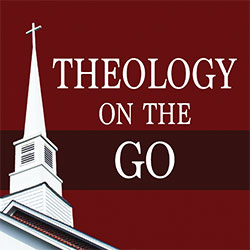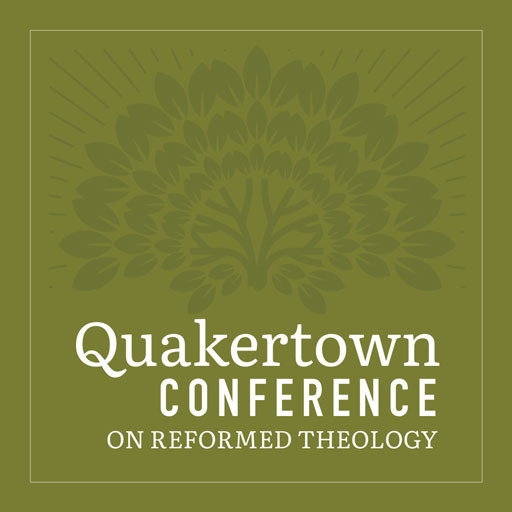
Gregory of Nyssa and His Compassion for the Poor
Gregory of Nyssa and His Compassion for the Poor
I have written about Basil of Caesarea and Gregory of Nazianzus, two of the famous three men from Cappadocia (in today’s Turkey) who stood for the divinity, unity, and distinction of the three Persons of the Trinity. I have also written about Macrina, Basil’s sister, who can justly be called “the fourth Cappadocian.” It’s only right that I write now about the third Cappadocian, Gregory of Nyssa.
Gregory was Basil’s brother. I mentioned him in my article on Macrina, because he was very close to her and wrote an account of her life. Macrina’s death caused him to question the propriety of Christian mourning, and moved him to write a philosophical dialogue, On the Soul and Resurrection.
Gregory’s Life
Born around 335 in a wealthy family of nine children, Gregory chose a different path than his brother. He didn’t study in Athens, but taught himself at home, thanks to the family’s large library and with the assistance of his mother Emmelia and sister Macrina. He learned the rudiments of rhetoric from Basil, then continued on his own. His education, however, was by no means inferior to the others’. His writings reveal a sharp mind and impressive knowledge.
Some believe he married a woman named Theosebeia. This belief is based on a letter by Gregory of Nazianzus, who consoled his friend after Theosebeia’s death. He called her his suzugon, which could be translated as companion or yoke-fellow. Much ink has been spilled on whether she was his wife or a close coworker. Some believe she was another sister.
In any case, he must have achieved some ecclesiastical status because around 372 Basil (then bishop of Caesarea) ordained him as bishop of Nyssa. This ordination was part of Basil’s plan to counteract the restrictions of Emperor Valens, who had just cut in half the territories under Basil’s jurisdiction. In response, Basil doubled the number of bishops in his area, enlisting both his brother Gregory and his friend Gregory of Nazianzus (who became bishop of Sasima).
Both Nyssa and Sasima were small Cappadocian towns, which we would describe as “out in the boonies.” Both Gregories were generally unhappy with their posts. Eventually, Gregory of Nazianzus resigned, while Gregory became embroiled in a conflict with the civil government and forced to temporarily leave his post on charges of mismanaged funds.
During his two-year absence, a pro-Arian faction that denied the divinity of Christ took control of the area. Basil was disappointed by this turn of events, and blamed this defeat on his brother’s lack of experience. He was also frustrated by Gregory’s attempts to bring peace in the area by forging some letters between Basil and one of their uncles.
Overall, however, Gregory and Basil enjoyed a good relation. Basil was ready to take the blame for any problem that had resulted from his appointment of his brother, and Gregory continued to express his love and respect for Basil, deeply mourning his heath.
After Valens’s death, Gregory returned to Nyssa for some time. He became, with Gregory of Nazianzus, one of the strongest defenders of Christ’s divinity at the Synod of Antioch in 379 and especially at the Council of Constantinople in 381. He also proved to be an excellent preacher, so much that he was asked to deliver funeral orations for members of the imperial family in 383 and 385.
His major works (which included the anti-Arian Against Eunomios, homilies on the Song of Songs, a dialogue with his sister Macrina On the Soul and the Resurrection, and a treatise On the Making of Man, which was supposed to be a supplement to Basil’s Hexaemeron on God’s work of creation).
Gregory’s Love for the Marginalized
Like Macrina and the other Cappadocian fathers, Gregory put great emphasis on the community’s responsibility for the poor and needy, including the lepers, who were traditionally excluded from society. His sermons challenged the rich to give of their wealth and the healthy to give of their strength.
His theological reflections permeate his pleas. His reflections on the making of mankind, for example, are evident in his insistence on seeing every man as bearer of the image of God – even the lepers, as disfigured and misshapen as they looked. He urged his listeners to look beyond the obvious differences and see the inherent affinity. “When you see a human being in such condition,” he said, “do you not feel awe for the kinship?”[1]
It was a provocative question, one that his listeners might have been afraid to face. Who wants to see in an ailing person, especially one whose features provoke feelings of fear and aversion, a reminder of one’s vulnerability? But that’s exactly the reminder Gregory wanted to give.
He emphasized that the leper “is a human being among human beings, who possesses nothing peculiar in himself besides the common nature.”[2] This led to a logical conclusion. “Since all humanity is governed by a single nature, and no one has any guarantee within himself of continual well-being, it is appropriate to remember the gospel precept, which counsels that whatever we wish people would do to us, [we should] do [to them].”[3]
He also reminded his listeners of the example of the Christ who had set that rule – and example he gave not only in loving the lepers and the unwanted, but in assuming a vulnerable, uncomfortable, “stinking and foul”[4] human flesh.
Besides this reluctancy to face the frailty of their own human nature, Gregory explored other reasons for his listeners’ hesitancy to love the least loveable. One was the tendency to see mystifying disfigurations of a person’s body, such as in leprosy, as judgments from God.
As in some Christian circles today, many of Gregory’s listeners were inclined to see illness as a direct punishment from God and the recourse to physicians as lack of faith. Gregory was well acquainted with medical studies. Like Basil and Origen (a philosopher he admired), he equated the work of a physician with the work of a farmer or any other occupation that benefits mankind. But even some of those who accepted this line of thought had a hard time placing leprosy on the same level as other illnesses. It just seemed too extreme and mystifying.
“What do you accuse them of having?[5]” Gregory asked them, before describing the natural causes of the disease as they were understood in his day. He tried to help his listeners understand that leprosy was just a heightened form of skin disease. If they could accept someone with a simple rash, they should accept lepers too.
He didn’t ignore the obvious fear of contagion, but tried to defuse it. He had probably observed the doctors and nurses at Basil’s leprosarium and concluded that leprosy was not as contagious as people generally thought. He also believed that the spiritual benefits received by those who reached out to the lepers in love were worth the risk. “Sympathy for the unfortunate is, in this life, useful for the healthy,”[6] he said.
Even without going as far as Basil’s medical staff, however, the Christian community could still open their doors and hearts to include a group of highly marginalized people by seeing them as equals, restoring their dignity as God’s image-bearers, and remembering Christ’s love for them.
Gregory’s sermons followed closely a similar set of sermons delivered by his friend and namesake, Gregory of Nazianzus. Together with other sermons and writings by Basil, John Chrysostom, Shenoute of Atripe[7], and other men of their time, they did much to influence the Christian community – and eventually society as a whole – to care for the needy and destigmatize their condition.
[1] Gregory of Nyssa, On the Love of the Poor, quoted in Susan Wessel, Passion and Compassion in Early Christianity, Cambridge University Press, 2016, p. 51.
[2] Ibid., p. 53
[3] Ibid., p. 56.
[4] Ibid., p. 53
[5] Ibid.
[6] Ibid. p. 56
[7] Coptic monastic leader. He also emphasized the importance of recognizing the image of God in those who are different from us, and believed that those who mocked the blind or maimed should be punished.

























